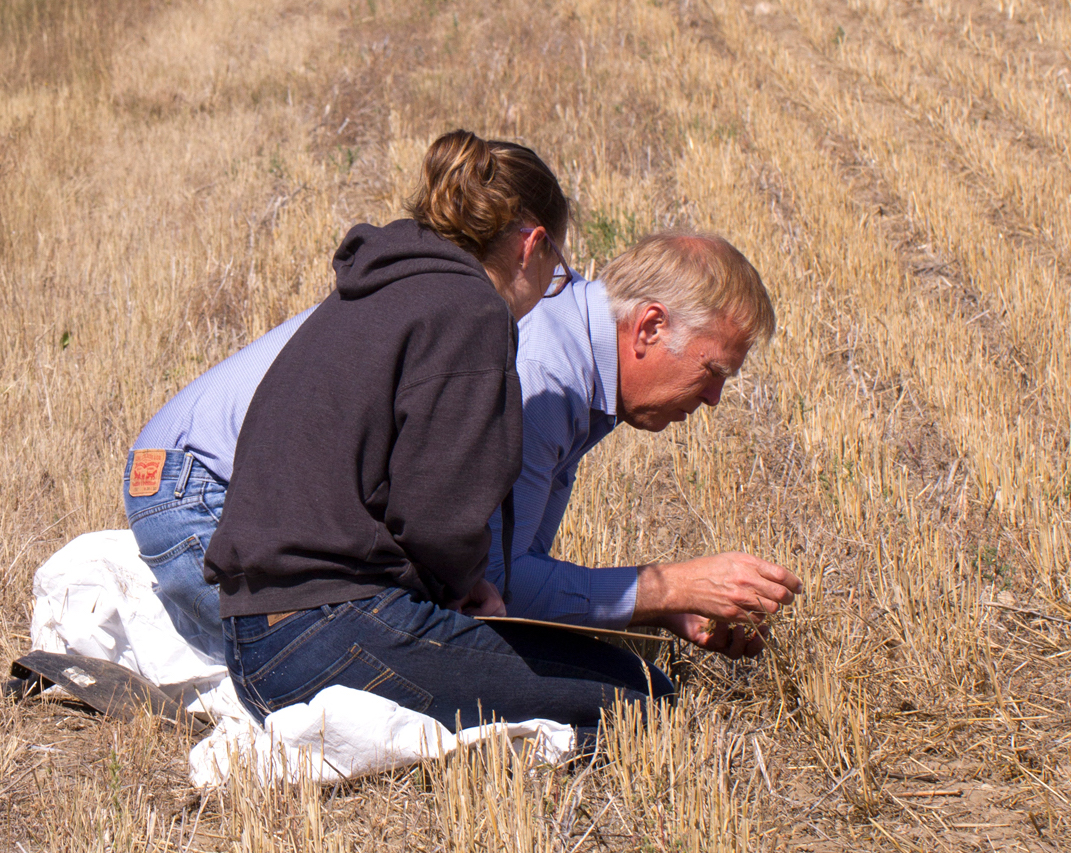FACE-OFF
WHAT ARE THE BENEFITS OF CARBON OFFSETS?
BY ALASTAIR HANDLEY
Carbon offsets are double green—they help farmers measure the impact of their agricultural sustainability initiatives and make them money at the same time. To date, more than 36 million carbon credits worth well over $400 million have been generated in Alberta, with $100 million-plus coming from the agricultural sector.
Today, farmers are facing increasing pressure to implement sustainable agricultural practices. The 10 biggest food companies in the world are promoting sustainable agriculture. Wal-Mart, the largest grocer in the world, is pushing the agricultural sector to reduce greenhouse gas (GHG) emissions. The United Nations Food and Agriculture Organization is seeking ways to feed nine billion people by 2050 with the resources we currently have. Sustainable agriculture is here to stay, and farmers are going to come under increasing pressure to deliver sustainably grown food.
To do this, farmers must measure and monitor the impacts of their practices. Carbon credits provide a soft entry into the demands that sustainability is going to put on farmers, and they are the only mechanism that pays farmers for their sustainability efforts. Work is currently underway in a number of jurisdictions to develop frameworks for water quality and habitat conservation credits.
Environmentally speaking, offsets provide private industry the needed time to reduce GHG and transition into a low-carbon economy. Private industry also provides innovation and technology development to spur economic growth.
Carbon offsets also provide incentives for companies to take advantage of lower- cost opportunities to reduce emissions in sectors not subject to an emissions cap. This can deliver valuable ancillary environmental and economic benefits, including technology transfer among developed and developing countries, job development and local economic growth, reductions in deforestation of tropical forests, restoration of degraded forests and adoption of sustainable agriculture and forestry practices. Offsets also serve to enhance awareness of GHG emissions and their adverse consequences.
Finally, the true price of carbon is not yet known and cannot be identified to create a tax rate. Offset markets are critical for price discovery, and to determine how efficiently and effectively emissions reduction targets will be achieved.
When you look at offsets through an economic lens, the benefits to the farmer are significant. Companies are lining up to buy your carbon credits. Following harvest in late 2015, I had three buyers call that wanted to commit to purchase every credit that I could produce to the end of 2020. Simply put, there is a future revenue stream for farmers who are able and willing to participate in the market.
As an aggregator, our company’s focus is to help Alberta grain farmers earn an additional revenue stream through the quantification and sale of their carbon credits. We have been doing this since 2007 and have lived through the market’s ups and downs as it has matured. I hear from farmers who maximize the market benefits, and also from those who say the program isn’t worth their time.
When farmers tell me things like “it’s too much work,” “I don’t like paperwork,” “it’s not worth my time,” “I don’t believe in climate change” or “you’re making all of the money,” I realize that I am failing in my job to inform these farmers about the current carbon market and where it is headed. A recent call I took from a farmer in the “not worth my time” camp gave me the opportunity to tell him that at $500 an hour for his paperwork he was probably making more than his lawyer. “I’ll stay in the program,” he said. The market has changed dramatically for the better since 2007 and expectations are that credits will double in value by 2018. Paperwork is a chore, but our paperwork pays.
Despite these numbers, there are always going to be farmers who choose not to participate in the program because they don’t need the money or it’s not worth their time. To them I say, “do it for the tax deduction if you don’t want the cash.” Let us generate and sell your credits. We will then donate your credit revenue to a charity of your choice in your name.
Carbon credits are a bridge to a low carbon economy. Farmers who are implementing best practices in their fields are helping to build this bridge. This effort increases the credibility of Alberta to deliver sustainably grown crops.
THANKS, BUT NO THANKS: ENERGY REBATES PREFERABLE TO CARBON CREDIT CASH
BY KEVIN AUCH
Agriculture is a vital industry, growing the food that feeds the world. It is also an industry that requires a large amount of land, water and energy, but farmers have long been on the cutting edge of new technologies and practices to reduce these inputs while increasing production—benefitting both their farms and the environment.
No matter what anyone thinks of the goal of switching to more environmentally friendly forms of energy, there are not very many non-carbon-based energy options that are available right now that can power a truck, tractor, combine or other farm equipment. There is very little I can do that I haven’t already done to reduce energy use and greenhouse gas emissions. I direct seed with a narrow disk-type opener to reduce draft and fuel usage, I kill weeds with a sprayer that uses a small fraction of the fuel of a soil-disturbing tillage operation, and my irrigation pivots are low-pressure, large-water-droplet, high-efficiency systems.
I’ve done soil tests for 30 years and I’ve noticed there is a general trend of increasing organic matter in those tests. While I haven’t done benchmark tests in exactly the same location over the course of that time, I would still estimate the organic matter increase to be about 0.5 per cent in the last 20 years since adopting ultra-low-disturbance no-till practices. If the top foot of dry soil weighs 64 pounds per square foot, my farm has sequestered approximately 6.3 tonnes per acre of organic matter in 20 years, or about 700 pounds per year. Given a fuel use of approximately 10 litres of diesel per acre, it seems that my no-till practice is taking more carbon out of the atmosphere than I put in through my fuel usage—more than 660 pounds out and less than 22 pounds in.
My low-disturbance openers mean that I disrupt the soil far less, and, more importantly, protect the flora and fauna living there—the flora and fauna that have been actively moving carbon from the atmosphere into this living ecosystem at an accelerated rate ever since we stopped dragging a cultivator through their home a couple decades ago. For this environmental service of sequestering carbon, the provincial government offers a small payment to farmers through its carbon-offset market.
Carbon credits must be applied for, and I have to use a third-party aggregator who will charge over one-third of the value for helping with the paperwork. Yet, I have to fill out all the paperwork, and contact and negotiate with landlords for permission to sell credits. I’m also on the hook for repaying the carbon credits if I change tillage practices. A few years back, I did apply to be paid for these credits, and the fact that I was allowed to apply for six years all at once meant that the cheque I received was well worth the time. I looked into it the following year and haven’t applied since because the work involved was not worth the payment I would receive. While my fuel usage per unit of production has decreased dramatically, reducing my carbon footprint even further, I fear rising energy costs will vastly exceed even the increased amount I could apply for in offset credits.
My farm decisions in the past have been influenced by the benefit that no-till and high-efficiency irrigation have offered to the farm. To date, the monetary value of carbon credits has been minuscule in comparison, but the increasing costs of energy are becoming more burdensome all the time. If the provincial government is serious about promoting reduction of greenhouse gas emissions in agriculture, I think my farm, and many other no-till farms like mine, would be better off receiving larger tax rebates on our energy costs and forgetting the carbon credits altogether.








Comments